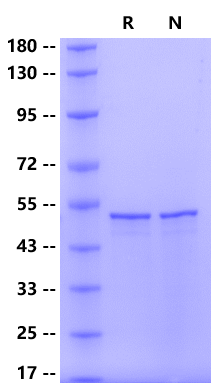MSDNGPQNQRNALRITFGGPSDSTGSNQNGGARSKQRRPQGLPNNTASWFTALTQHGKEDLKFPRGQGVPINTNSSPDDQIGYYRRATRRIRGGDGKMKDLSPRWYFYYLGTGPEAGLPYGANKDGIIWVATEGALNTPKDHIGTRNSANNAAIVLQLPQGTTLPKGFYAEGSRGGSQASSRSSSRSRNSSRNSTPGSSKRTSPARMAGNGGDAALALLLLDRLNQLESKMSGKGQQQQGQTVTKKSAAEASKKPRQKRTATKAYNVTQAFGRRGPEQTQGNFGDQELIRQGTDYKHWPQIAQFAPSASAFFGMSRIGMEVTPSGTWLTYTGAIKLDDKDPNFKDQVILLNKHIDAYKTFPPTEPKKDKKKKADETQALPQRQKKQQTVTLLPAADLDDFSKQLQQSMSRADSTQAGGGSHHHHHHHH
Severe acute respiratory syndrome coronavirus 2(SARS-CoV-2) has continued to adapt for human infection and transmission, resulting in several variants of concern. While most mutations occur within a single lineage, a small number are shared across multiple variants. The SARS-CoV-2 nucleocapsid (N) gene is one hotspot for coding mutations. Nucleoproteins localize to the cytoplasm and the nucleolus, a subnuclear structure, in both virus-infected primary cells and in cells transfected with plasmids that express N protein. The coronavirus N protein is required for coronavirus RNA synthesis and has RNA chaperone activity that may be involved in template switch. Nucleocapsid protein is a highly immunogenic phosphoprotein also implicated in viral genome replication and in modulating cell signaling pathways. Because of N protein sequence and its strong immunogenicity, the N protein of coronavirus is chosen as a diagnostic tool.
The mutations are identified on the SARS-CoV-2 Omicron variant Pango lineage BA.4, which included P13L, del31-33, P151S, R203K, G204R, S413R.
